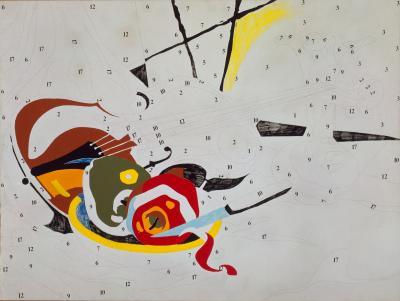When the Metropolitan Museum of Art opens the doors of the Met Breuer to the public Friday, those with recent and long-passed memories of its landlord and former occupant, the Whitney Museum of American Art, will find themselves a bit flummoxed. (Full disclosure, this author was a former employee of the Whitney.) The two premiere shows feature not only a concentration of international artists, but the exhibition “Unfinished: Thoughts Left Visible” includes an assemblage of 190 artworks spanning the 15th century and the present.Where does this leave East End artists both contemporary and historical? Well, they are certainly there, but not in the volume one might expect in a space once dedicated solely to American art, primarily of the 20th century.If the thought of seeing so much history in the Breuer space feels alienating, it does help to visit the fourth floor first. This section of the exhibition begins with the advent of Modernism in the late 19th and 20th centuries with artists such as Cezanne and Picasso and works its way quickly into more recent history.By the time the viewer gets to the third floor and the very early works, the shock of the old may give way to a kind of wonder. The visceral realization hits that rather than failing to acknowledge the building’s legacy, the Met is purposefully taking over the space on its terms and in its own way.One of the ah-ha moments came upon viewing Willem de Kooning’s “Woman I,” a loan from the collection of the Museum of Modern Art. The Whitney has a very important work from the series, “Woman With Bicycle,” which is what someone familiar with its collection and the space would expect to see there. Instead, the Met chose a different institution in the same city to borrow a de Kooning work. Any question about whether MoMA’s painting had a particularly unfinished quality that the Whitney de Kooning lacked is left unanswered by the wall text that speaks only of an “unfinished quality” throughout his painting in general.The exhibition checklist further illuminates the Met’s aims. There is not a single work borrowed from the Whitney, nor is this just a Met Museum permanent-collection show. There are plenty of works from the Met, but many others from sources as varied as the Prado in Madrid, the Victoria and Albert Museum in London, the Pitti Palace in Florence, the National Gallery in Washington, the Munch Museum in Oslo, the Picasso Museum in Paris, and so on. The show includes a Leonardo painting and a Michelangelo drawing, a Titian painting, several Cezannes and Picassos, works by Rembrandt, Mondrian, Van Gogh, Donatello, Turner, Corot, Manet, Matisse, Rodin, Sol LeWitt, Eva Hesse, Janine Antoni, Louise Bourgeois, and so many, many more. It is rather dizzying and yet brilliant in its broad inclusiveness under a thematic banner. If the museum wanted to map out a vision of interpreting modern and contemporary art through its relationship to the past for the next eight years of its occupation of the old Whitney building, it is hard to imagine that they could have done better.In fact, it seems rather myopic to look at the show through the lens of the East End artists included, but that is what we do here. As mentioned before, de Kooning is on view as well as Jackson Pollock, represented by a drip painting that is arguably finished, but only within the confines of the canvas.Continuing the theme of remarks taken from Allan Kaprow, the Met wall label states, "the four sides of any one Pollock represent merely the arbitrary termination of painterly activity. Even if Pollock stopped painting, Kaprow added, 'our imaginations continue [the work] outward indefinitely, as though refusing to accept the artificiality of an ending.' "And what better place to address the challenges to the ideas of completeness that modern art introduced.Also included is a print by Vija Celmins, an actual unfinished work by Roy Lichtenstein that was in progress when he died in 1997, an Andy Warhol “paint-by-numbers” painting deliberately left unfinished, and Robert Gober’s “Slides of a Changing Painting,” which are shown in projection and progression as a transformative work.So go see the show, figure out for yourself what it means, but by all means don’t miss some of the more exciting loans on view in New York City. The exhibition will be on view through Sept. 4.
Published 6 years ago
Last updated 6 years ago

